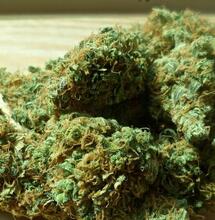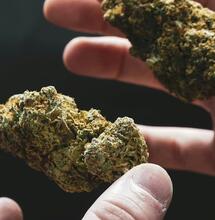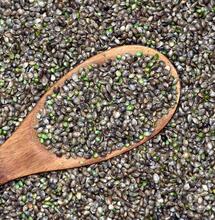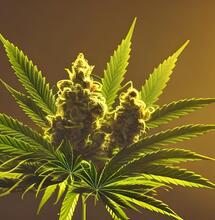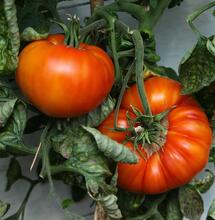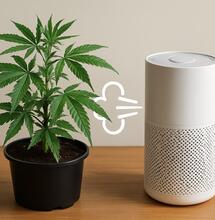How Do Terpenes and Flavonoids Compare?
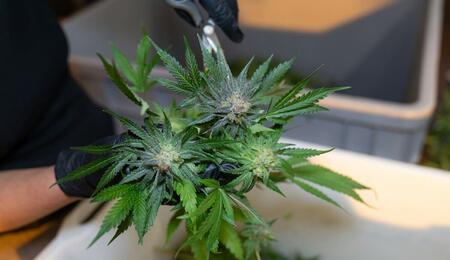
Terpenes are the aromatic compounds found in almost all plant life, including cannabis, and they are primarily responsible for giving scent and flavor. In cannabis, terpenes may additionally reinforce the role of cannabinoids. On the other hand, flavonoids are phenolic compounds, a more simple chemical group, and their main role in cannabis is giving the color and pigment. However, there’s much more to these prescribed roles.
Terpenes and Their Main Functions
Between terpenes and flavonoids, terpenes are the larger group of compounds. They are the aromatic constituents, producing the unique pungent smell of cannabis that growers often find it hard to mask and conceal from curious guests and neighbors. Terpenes are a primary component in essential oils and plant resins; they can be modified, and when they are, they are called terpenoids. However, the two terms are often used interchangeably.
The smell of pine in the forest, the gentle fragrance from flowers spreading around the garden, or the hint of freshly cut grass traveling across the street, all of it owes to unique terpene combinations in the plant life. Similarly, the specific smell and aroma of cannabis varieties will greatly depend on which terpene is most concentrated in the trichomes of the flower, where terpenes are produced. For instance, Gorilla Glue has a distinct gassy smell exactly due to its rich Caryophyllene, Myrcene and Limonene content. The same combination of terpenes can be found in a strain such as Gelato, but the varying ratios produce a more sweet fragrance in this case.
Beyond smell and aroma, another important function of terpenes in nature is their ability to help wild plants attract pollinators, as well as they can act as a pest deterrent.
In cannabis, terpenes additionally help the effects of cannabinoids, the compounds that deliver the most of the medicinal effect from cannabis buds. Isolated THC or isolated CBD would not have the same engagement with the endocannabinoid system if it weren’t for some terpenes. These tiny aromatic particles augment the punch of THC, and sometimes, can selectively activate cannabinoid receptors.
The health effects from terpenes are varied; they can have anti-anxiety, antidepressant, anti-inflammation, antimicrobial, anticancer and neuroprotective properties. But in case you feel allergic to cannabis, it just might be some of the terpenes; it is usually their oxidized forms that might prompt allergic response in some users.
Flavonoids and Why They Are Important in Cannabis
Another group of chemicals that can be found in cannabis, and all other vegetation actually, is flavonoids. It is considered that flavonoids make around 10% of all cannabis bioactive compounds. Onions, berries, green tea, apples, grapes, broccoli and various other fruits and vegetables constitute the plant life that is richest in flavonoids.
In cannabis, flavonoids are one of several different compounds that contribute to the plant’s aroma and flavor - and also pigment. Cannabis gets the color of its stem and fan leaves largely because of flavonoids. Different types of flavonoids will produce different shades and nuances. For example, the impressive purple color of certain strains can be due to the flavonoids known as anthoxanthins or anthocyanins (often these are stress responses, such as cold or other environmental factors).
Some flavonoids are almost exclusive to cannabis. Examples include Cannflavin A and Cannflavin B. Together called cannflavins, this group of flavonoids is further noted for its anti-inflammatory potential, therefore has been considered for therapeutic applications.
Other flavonoids found in cannabis are more widely available and can be traced in various vegetables, fruits and plants. For instance, apples, chocolate, red onions, berries and red wine are extremely rich in Quercetin. Beans, kale, endive, and green beans are rich in Kaempferol. And so on and so forth.
Just like terpenes, flavonoids can also act defensively. They can shield against various environmental stressors, including fungi, bacteria, insects, excess heat and excess cold. Scientists are getting a traction on the medicinal potential of flavonoids as well.
What Are the Differences Between Terpenes and Flavonoids?
The main difference between terpenes and flavonoids comes down to what each group gives to cannabis in terms of its physical appearance and properties. Terpenes dominate the smell and flavor of cannabis, while flavonoids have a smaller contribution to it, but they greatly determine the color of each variety.
You can also think of these ‘contributions’ as aroma vs. visual appeal. Terpenes are more about fragrance, and flavonoids more about some of the spectacular shades and nuances seen in cannabis. As already mentioned, some flavonoids are unique to cannabis, or are rarely found in other plant species.
For example, the most striking colors seen in certain marijuana cultivars, such as blue, red, purple or pink, happen due to the presence of anthocyanins. Anthocyanins are responsible for the blue and red hues exhibited by berries and grapes. Purple Diesel, Granddaddy Purple and Blue Dream are some of the famous cannabis strain examples rich in anthocyanins. Interestingly enough, the same flavonoid is present in few other red and orange cannabis strains, but because those strains contain much higher terpene content, we see another color (example Lemon Kush).
Another difference between terpenes and flavonoids is the health effects each group might bring through consumption. And a third significant difference is that, in nature, there are far more terpenes than there are flavonoids. In cannabis plants, researchers have reportedly detected over 150 distinct terpene compounds versus only 20 flavonoids.
Still, while both flavonoids and terpenes come in varying combinations, they always work together to deliver the rich sensory experience of cannabis. Both groups contribute to the entourage effect, or what is the combined therapeutic effect of all compounds that can be isolated from cannabis; this effect is stronger than taking those very same compounds in isolated or pure forms.
More from Soft Secrets:

